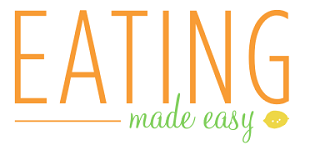Yesterday I wrote about my belief that it’s important to enjoy some of the less-nutritious foods you love in order to maintain a healthy weight – and good overall health – over time.
But one of my readers brought up the good point that each person’s definition of “some” might be a little different, and that it would be helpful to have more specific guidance. So here is additional information about empty calories and how not to overdo it.
What are empty calories?
Also called “discretionary calories,” these refer to foods that provide lots of calories without many nutrients. A.k.a. junk food like sweets, chips/packaged snacks, white refined carbohydrates, alcoholic beverages, fried foods, fast food, etc.
How many empty calories can I eat each day?
The answer is different for everyone, but some experts say about 100 calories worth is a good goal. (I’ll be honest and say that I probably eat double this of sweets or snacks everyday…room for improvement!). Keep in mind that if you really indulge or overeat on one day, or drink a few alcoholic beverages, you’ll have fewer empty calories to “spend” in the following days.
What determines how many empty calories I can have?
Age, sex, and physical activity level are the key factors in determining calorie intake. Calorie needs diminish with age, men’s bodies often require more than women’s, and more active people burn more calories so they can eat more. So, a young athlete who exercises for hours everyday can eat more non-nutritious calories without gaining weight than a middle-aged sedentary woman.
If I exercise can I have more empty calories?
Vigorous exercise burns calories, so the amount you get to eat goes up with the amount of exercise you do. But, most of us overestimate how much we burn during exercise, so if you don’t err on the side of caution you may end up gaining weight. And even if you regularly exercise, it’s still better to satisfy your hunger with nutritious extra calories, not empty ones.
What does this mean on a practical, day-to-day level?
- Eat nutritious foods (especially vegetables and fruits) much more often than you eat non-nutritious foods.
- Keep portions small. (Smaller than you’d want them to be, probably!)
- Read Nutrition Facts Labels – otherwise it’s easy to lie to yourself about how much you’re eating.
- Don’t drink your calories. Soda, sweetened teas, fruit drinks, even juice: they’re just not worth the excess calories because they don’t fill you up. If you must indulge in a sweet beverage (or cocktail, beer, wine), make sure whatever else you eat that day is high in nutrients and low in calories.
Here’s an example:
This chart shows you how many empty calories are present in different foods in the Grains food group. (Though I would disagree with the idea that white bread or English muffins are 100% nutritious. If something is made from refined or white flour, it’s pretty empty).
To see empty calories in other food groups, visit USDA’s MyPlate.








3 Comments
Melanie Schneider
July 18, 2012 at 10:26 amIt is so interesting the differing knowledge people have on calories and nutrition in general. As a fitness and health freak, I have acquired a lot of know,edge, but it is so great to have resources like this for people who are too busy and too stressed to really consider their health among all other priorities in their life. But what we really need is a re-evaluation of our valuation of health in today’s society. That’s what I’m all about! http://www.fitnessfoodieblog.wordpress.com
Howtotoneyourbutt
July 21, 2012 at 7:34 pmI think the best piece of information is read the labels on the packaging. having calories that are discretionary is important emotionally, they are the one that you are eating to enjoy not to survive!
Amelia
July 23, 2012 at 9:33 amCompletely agree that discretionary calories are a life enjoyment that’s not to be missed! Just have to keep it real about how frequently and in what quantity you’re indulging…which is the hard part!